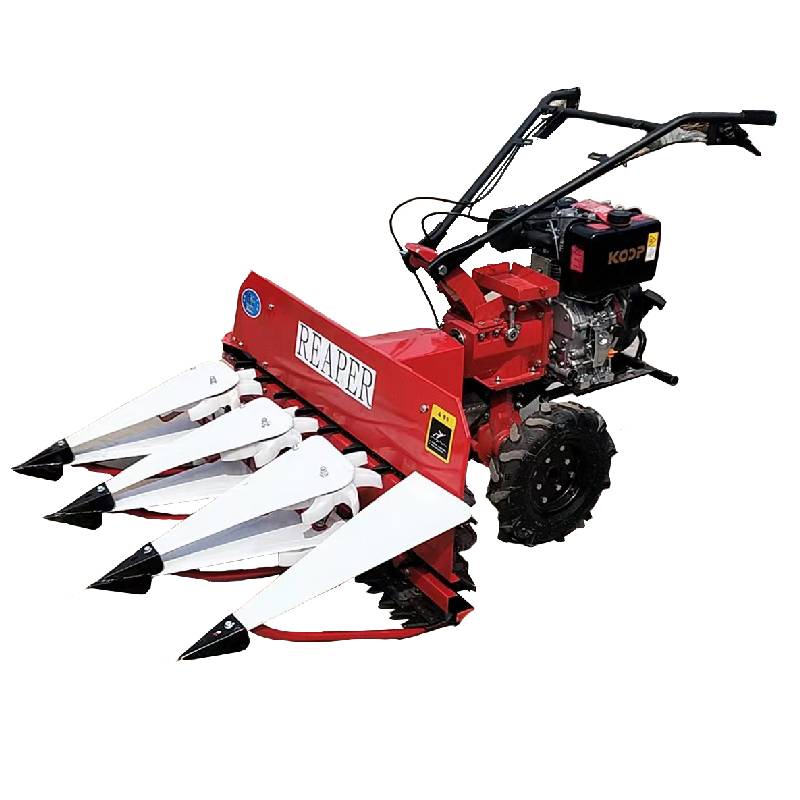Reaperbinder: 4-Wheel Automatic Crop Cutting & Binding
Mini tiller mounted reaper head: field notes, specs, and what buyers should really know
If you’ve been following compact harvesting tools, the moment when a Reaperbinder clips onto a mini tiller and turns it into a nimble, crop-cutting machine is still oddly satisfying. I’ve seen these kits change the rhythm of small farms from Hebei to the Mekong delta. The model here is the Mini tiller mounted reaper head (Microcultivator cutter head, GW100C2 i), made in Julu Industrial Park, Xingtai City, Hebei Province, China. It’s practical, not flashy—and that’s kind of the point.

Where it fits in the market
Demand for compact harvesting attachments keeps rising as labor tightens and smallholders push for faster, cleaner windrows. Honestly, the trend feels inevitable. A Reaperbinder paired with a 5–9 hp mini tiller is the gateway to mechanization for many cooperatives—especially in rice and wheat belts where fields are small, irregular, or terraced. Many customers say the attachment saves “a day of back pain” per acre. Not scientific, but it tracks with what I’ve observed.
How it works (process flow, materials, testing)
- Materials: heat-treated high-carbon steel cutter blades and guards; alloy steel linkages; powder-coated housings; sealed bearings. Spare wear parts are standard.
- Manufacturing: CNC stamping and machining → quenching/tempering of blades → surface finishing and coating → sub-assembly of cutter bar and drive → final assembly and balance checks.
- Methods: reciprocating cutter bar with crop lifters; belt/chain drive from the tiller output; quick coupler or bracket kit depending on tiller model.
- Testing standards: factory QA typically aligns with ISO 9001 systems; safety checks reference ISO 4254-1 (ag machinery safety) and ISO 11684 (operator safety). CE conformity is common under the EU Machinery Directive.
- Service life: in typical smallholder use and with basic maintenance (lubrication, timely sharpening), you’re looking at seasons rather than months—real-world use may vary with soil, moisture, and crop density.
- Industries: small grains (rice, wheat, barley, oats), seed producers, research plots, demo farms, municipal grounds for grass and forage prep.
Technical specifications (typical/approximate)
| Model | GW100C2 (microcultivator cutter head) |
| Mounting | Mini tiller bracket/adapter; verify output shaft and belt/chain layout with vendor |
| Cutting width | ≈0.8–1.0 m (varies by configuration; check order sheet) |
| Cutting system | Reciprocating cutter bar with crop lifters/guards |
| Materials | Heat-treated blade steel; powder-coated housing; sealed bearings |
| Typical crops | Rice, wheat, barley, oats, forage grasses |
| Productivity | Field-dependent; many users report notable savings vs. manual harvest |
Note: values are indicative; real-world use may vary with crop density, moisture, and tiller power.
Application scenarios
- Small paddies and terraced fields where combines can’t reach. - Lodged crops after wind/rain (the lifters help). - Seed plots where minimal shattering is crucial. - Quick forage cutting before baling. To be honest, the attachment shines where agility matters more than brute throughput.
Customization and options
Vendors in Hebei often support tailored brackets for specific tiller brands, optional crop lifter kits, guard styles for wet paddies, paint color, and multi-language manuals. I guess that’s why repeat orders are common—fitment done right makes or breaks the experience.
Vendor comparison (quick take)
| Vendor | Origin | Lead time | Customization | Certifications |
|---|---|---|---|---|
| Hebei maker (Julu Industrial Park) | Xingtai, Hebei, China | Around 15–30 days | Bracket fitment, color, manuals | ISO 9001; CE self-declaration |
| Regional brand B | Mixed (assembled locally) | ≈20–45 days | Limited brackets | Claims CE; verify docs |
| Trading house C | Various OEMs | Varies | Depends on factory | Check ISO/CE copies |
Based on public catalogs and buyer feedback; always request current certificates and a mounting drawing.
Field feedback and mini case
A Southeast Asian rice cooperative told me the Reaperbinder saved roughly two workers per hectare during peak season. Another buyer in North India said they ordered extra guards after clipping stones—minor hiccup, but fair. What came up repeatedly: quick learnability (about an hour of practice) and the importance of sharpening schedules.
What to verify before purchase
- Mounting drawings for your exact tiller model
- Spare blade/guard kit availability
- Safety conformity (ISO 4254-1/ISO 11684 references; CE declaration)
- After-sales parts lead times and warranty terms
Citations
- ISO 4254-1: Agricultural machinery — Safety — Part 1: General requirements. iso.org
- ISO 11684: Tractors, machinery for agriculture and forestry — Safety — General requirements. iso.org
- EU Machinery Directive 2006/42/EC — CE conformity framework. eur-lex.europa.eu
- FAO. Farm mechanization for smallholder agriculture: strategy and options. fao.org
Latest news
-
Mini Combine Harvester for Paddy – Compact, Efficient Rice Harvesting SolutionsNewsNov.24,2025
-
Mini Chain Harvester: Compact Forestry Solutions for Sustainable LoggingNewsNov.23,2025
-
Kartar Mini Harvester – Compact, Efficient Harvesting Machinery for Small FarmsNewsNov.23,2025
-
Compact Power: Elevate Your Farming with Harvesting Machine SmallNewsNov.22,2025
-
Discover the Power and Potential of Harvester Mini Combine Machines | Efficient Small-Scale HarvestingNewsNov.22,2025
-
Compact Harvester Machines: Small-Scale Agriculture’s Big AdvantageNewsNov.21,2025








